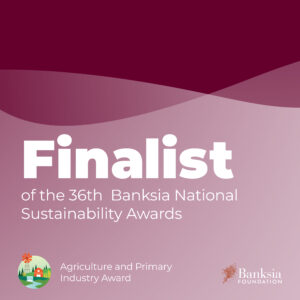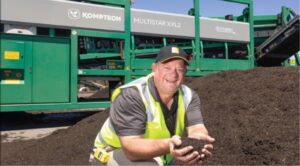In a field, quite close at hand, over a hundred years ago – before industrial scale land interference, soil was successfully recycling nutrients in a self-regulating fashion. The hand of man has affected this naturally balanced system by building cities, mining, chemical based farming practices and setting up commercial scale waste disposal to landfill. Many of the things each of us now does, in our daily life, have a detrimental effect on soil.
Last year the United Nations Food and Agriculture Organisation designated 2015 International Year of Soil to alert the world to the need to reverse the trend of land degradation. Much of that degradation is about continuing losses in soil nutrients and soil carbon.
In a forest most of the carbon and nutrients are to be found above the ground in the timber and leaves of the trees. When a tree dies its tissues are broken down by lots of different organisms including borers and fungi, such as bracket mushrooms. Over time the whole tree is returned to the soil in the form of organic matter.
In grasslands most of the carbon and nutrients are found in the deep growing roots of perennial grasses. When grazing animals prune the foliage by eating it, roots die off to balance the loss of foliage and this deposits carbon and nutrients back into the soil. The grazing animals leave behind their urine and manure (as well as their own bodies when they die) and this also goes into the soil. When grasslands are deliberately destocked even some environmentalists have been shocked to find that soil fertility declined dramatically as a result of the disruption to the natural system.
I am particularly concerned about urban living and the impacts this has on the recycling of nutrients in our soils. Food and garden organic waste are currently going to landfill in most urban and populated regional areas of WA.
As such these nutrients are lost to the soil. We need to find ways of composting these organic materials and reapplying this back to the world’s most impoverished soils – the sands of WA.
We also have sewerage. Most of the nutrient rich liquid fraction is still sent out to the Indian Ocean after treatment through outfalls. In WA, the solids called biosolids are also treated and taken to only a small number of farms for incorporation into the soil by ploughing. I believe the best way to go is to compost these solids and then use the resulting organic matter to build soils right across the agricultural and horticultural sectors of WA. Modern composting systems are highly effective at removing health risks from these materials posed by human pathogens, plant pathogens and even pharmaceutical residues as well as weed seeds. Biosolids in particular are effective sources of some of the trace elements that our WA soils are most deficient in, such as copper and zinc.
Soil carbon is the key to nutrient cycling. There are four main forms of soil carbon starting with what I call hyperactive carbon, such as is found in living organisms. Then active carbon can be seen as decomposing material that once was alive. Humus is a very stable form of soil carbon and this is formed from the further breakdown of the active carbon. Finally inert carbon is a charcoal like material that can persist in the soils for hundreds of years.
For me humus is the hero when it comes to nutrient recycling, as it has the ability to capture and hold minerals then release them to plants in a form that is readily taken up.
Our current international issue of climate change has arrived on our doorstep because the carbon cycle is out of whack. Carbon that once was in the soil in the form of humus is now in the atmosphere in the form of carbon dioxide and methane.
The singular most significant job of the generations alive today is to get the carbon cycle back in balance. This can be done and Australia’s farmers and food producers can play a major role in this by adopting regenerative farming practices. Essentially this means building more stable carbon into farm soils year on year.

Grasslands can be storehouses of carbon and nutrients


Beenyup wastewater treatment plant





